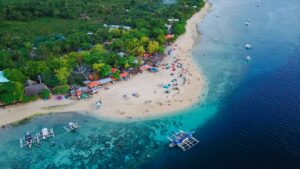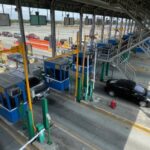One of the industries most severely impacted by the COVID-19 epidemic is tourism, particularly in nations where it is a key economic pillar. Countries like the Philippines can recover and relaunch their tourism industries with the help of digital technologies.
After travel restrictions related to the pandemic are relaxed, the Philippine tourism agency has launched a digital tourism campaign to promote its tourist destinations and boost foreign visitor arrivals.
By promoting contactless and cashless transactions, they are also pressuring tourism-related businesses to adopt stringent health safety standards. Local authorities in Baguio City, meanwhile, have implemented a successful digital contract tracing approach that makes use of cloud-based data encoding and capture, GIS-based geospatial analysis, and link analysis to give them a deeper understanding of how to handle COVID-19 instances in the city.
ADB and the Australian Government seek to assist cities throughout Southeast Asia in enhancing their service delivery, planning, and financial management by utilizing appropriate digital technology through the ASEAN Australia Smart Cities Trust Fund. Visit the AASCTF’s social media channels to find out more about the trust fund and keep up with the conversations.
Travel Corridors and Bubbles
In a news conference, DOT Secretary Bernadette Puyat mentioned that “travel bubbles” or “travel corridors” are one of the options being looked at.
In the foreseeable future, Puyat added, “We are looking at what we term travel bubbles or travel corridors.” “Given that they have their own international airports, we are in discussions with a variety of nations with nearly no COVID instances who are able to fly to our domestic tourist areas, such Bohol and Boracay.
Travel bubbles or corridors are essentially private alliances between close-by or neighboring nations that have successfully contained the COVID-19 outbreak within their boundaries. By opening their borders and enabling individuals to travel without being subjected to on-arrival quarantine, these nations are re-establishing their international linkages.
Tourism Digitalization
Additionally, Secretary Puyat has pushed for the digitalization of tourism-related services and tasks. She mentioned in a recent webinar that despite the lack of a COVID-19 vaccination, both domestic and foreign visitors are willing to travel. They are anticipating innovation in contactless transactions, such as self-service procedures, electronic booking, payment, and contactless check-ins, as an extra safety measure.
“The change to e-commerce is vitally necessary for company continuity in the post-COVID era,” she added. “The approved norms of the ‘new normal’ favor contactless transactions.
The DOT and a software provider inked a memorandum of understanding this month to provide DOT-accredited enterprises with free access to digital mitigation and management solution solutions.
Puyat added that the MOU “opens the door for collaboration with the DOT for the creation and upgrading of technological solutions for enterprises associated with tourism.”
The software enables basic contact tracing, digital health questionnaires, and personnel management functions, in addition to digitalizing data and documents.
Build, Build, Build to usher Tourism Industry
Major transportation projects to advance the nation’s tourism economy are still on schedule, according to Vivencio Dizon (Presidential Adviser for Flagship Programs), in a prior webinar on the outlook of the administration’s “Build Build Build” Program.
For this to act as a primary impetus in our recovery for the upcoming months, he stated, “We will further accelerate ‘Build, Build, Build’ and our flagship projects.
Despite the pandemic, infrastructure initiatives to support the nation’s transportation and tourist industries are being given priority, according to Dizon. This includes the development of San Miguel Airport, the completion of SLEX Spine, Skyway Stage 3, and New Clark City Airport, all of which are anticipated to boost domestic and foreign travel to the Philippines.
Getting over the epidemic
78% of respondents state that they require up to PHP5m in additional money to assist them to restore their operations in order to recover from the pandemic. The majority claim that they require such funds for refinancing, working capital needs, and marketing funds to revive their brands.
Given that MSMEs account for 91% of respondents, it is not unexpected that 73% of respondents want to use government grants and subsidies to relaunch their businesses.
To stabilize operations, the majority of firms require finance. Working capital, marketing, and promotions will be its key uses.
Minimizing the effects of COVID-19
In June 2020, the country’s House of Representatives authorized House Bill 6815, also known as the proposed Philippine Economic Stimulus Act (PESA), to assist businesses and individuals in reducing the effects of COVID-19.
Once enacted into law, a PHP1.3 trillion economic stimulus package will be offered over the following four years to pay for the COVID-19 tests, salary subsidies, and support for MSMEs. The following programs will receive PHP58 billion from DOT-accredited tourism businesses under the provisions of the bill:
For maintenance and running costs, interest-free loans or the issuing of loan guarantees with durations of up to five years are available.
Credit facilities for bringing existing companies or facilities up to date or modernizing them to comply with new health and safety regulations
Pushes and initiatives in marketing and product development
Grants for education, training, and consulting with stakeholders in the tourism industry for new standard alternative livelihood programs
Using technology for information
Infrastructure and other pertinent initiatives to lessen the financial impact of COVID-19 on the tourism sector.
Please Read: COVID-19 VARIANTS AROUND THE WORLD
Reviving the Tourism Industry
The majority of respondents claim, that they can only maintain their activities for up to six months in the absence of earnings. Also, the majority of responders have a cash runway of up to six months.
One of the most important problems that authorities around the world are facing right now, is how to revive the tourism industry following COVID-19. In fact, 79% of poll participants predicted a fall in international visitor arrivals of more than 50% in 2020.
The hope of the government and the Department of Tourism will be able to develop a clear bounce-back program right away so the stakeholders can make business decisions, says one respondent.





